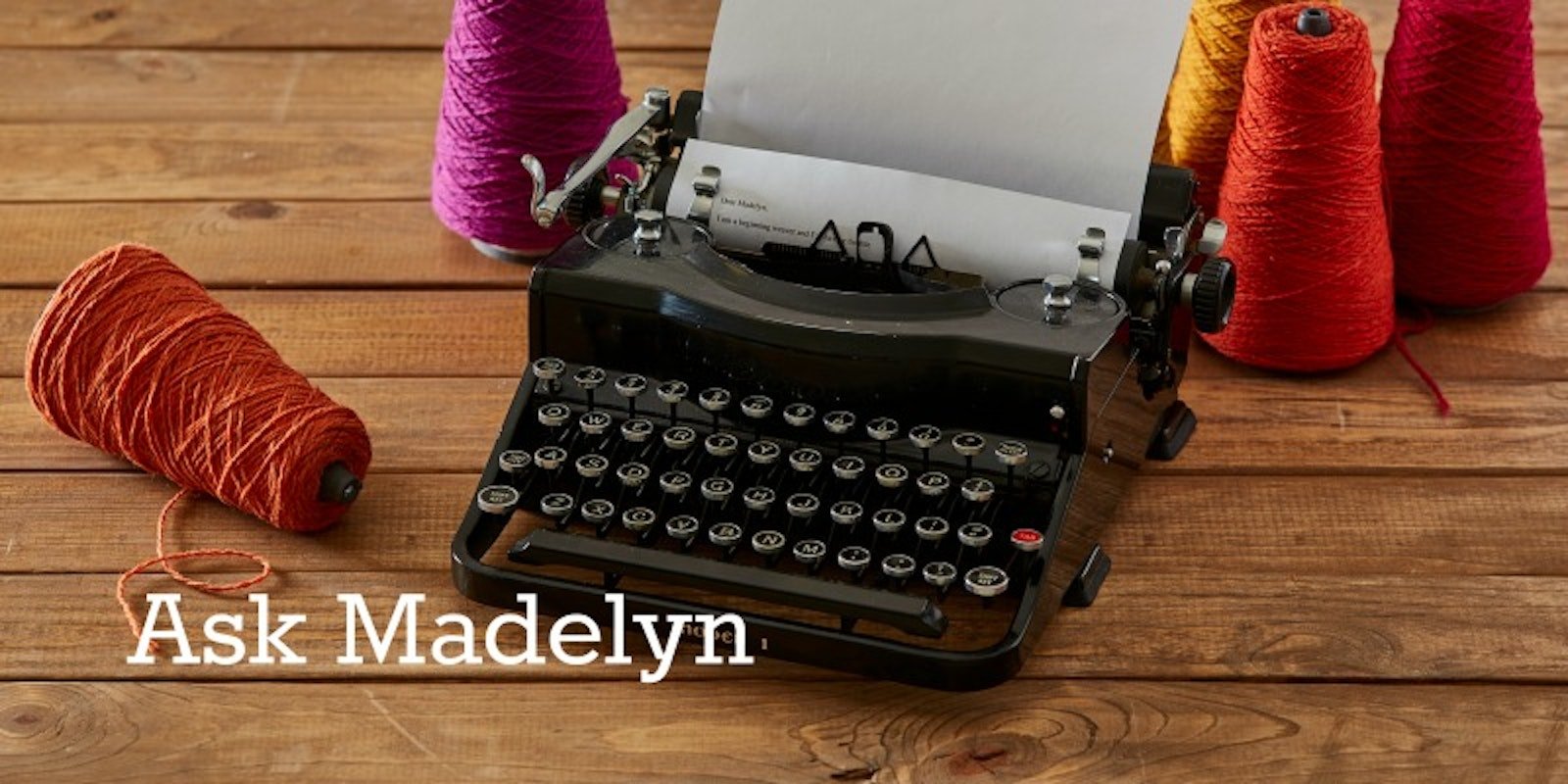Hi Madelyn!
A weaving friend of mine just came back from a workshop where she said the hardest part was “weaving to square.” I asked her what that meant, but I didn’t understand her answer. What is “weaving to square” and why is it important?
--Martha
Hi Martha!
We have many such phrases in weaving—they make sense when you know what they mean, but not if you don’t."Weaving to square" is usually used when a design (a motif like an overshot “snowball” is intended to be symmetrical in both width and height (even though a snowball is not a square). The same symmetry is often intended with diamond designs (as in twill or lace weaves, for example). In the latter, weaving a diamond as tall as it is wide usually means making sure the number of picks per inch is equal to the number of warp ends per inch. The best way to make sure you are “weaving to square” for these is to measure the number of picks per inch during weaving (instead of “eyeballing” it). An issue when you do this is that the warp is under tension. When you release the tension, the “diamond” may become slightly shorter. The amount shorter is so variable that it is always important to sample first: measuring the picks per inch as you weave, removing the sample from the loom so the warp relaxes, and washing the piece to see if any further change takes place. Many weavers overcompensate for this relaxation; only sampling will reveal how much it occurs.
With supplementary-weft structures, such as overshot and summer and winter, weaving to square does not mean weaving the same number of picks per inch as warp ends per inch. In theory, it should mean weaving twice as many picks per inch as ends per inch (for a 50/50 plain weave ground cloth to which the supplementary weft is added). It is almost impossible to beat in as many picks as that would require. For them, you have to eliminate one or more tabby/pattern sequences from each pattern block. Again, only sampling and finishing the sample can really determine how many picks to eliminate.
As to whether or not it is important? You could convince yourself that it doesn’t matter if your roses are oval or your diamonds elongated, but you’d probably always notice their lack of symmetry and be fixing them in your mind. Nonweavers would probably not notice, however, so this importance is not major.
--Madelyn

